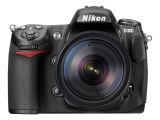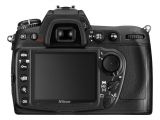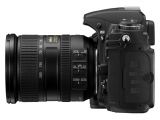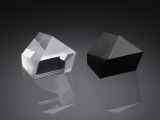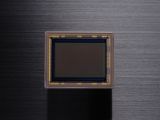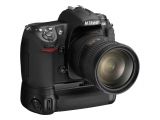The second camera on Nikon's today order of business is the D300, successor of the D200. Photographers were in awe when Canon's EOS 40D was announced, but the D300's specs are even more impressive.
First of all, Nikon has replaced the CCD sensor in the D200 with a new CMOS one (most likely the one announced by Sony a few days ago) with 12.3 megapixels. Unlike D3's 35mm full-frame unit, the sensor found in the D300 retains the DX format, which means that it has a 1.5x crop factor.
Similarly to the D3, the D300 also incorporates the new Expeed processor, which uses 14-bit A/D conversion and 16-bit image processing, making it possible to shoot using high-quality 14-bit NEF (RAW) format.
In terms of speed, the D300 reaches six frames per second, 0.5 frames per second lower than the new 40D. However, when used together with the new Multi-Power Battery Pack MB-D10, it goes up to 8 frames per second in continuous bursts of up to 100 shots. This is probably the first digital SLR which needs a power pack for more speed. It's not a surprise for those who have used film SLRs, but it sure is curious for a digital body. Anyway, together with the power packs the D300 sets a new record for advanced DSLRs.
What's even more remarkable considering the market segment the D300 is aimed at is that it uses the same autofocus module as the D3. The Multi-CAM 3500DX autofocus sensor module features 51 points, 15 of these being cross-type and 36 being horizontal. These sensors can either be used individually or in groups, with the option for Single Area AF mode and Dynamic AF modes using groups of either 9, 21 or all 51 focus points. The system also features 3D Focus Tracking with automatic focus point switching that takes advantage of all 51 AF points as it uses color and light information to accurately track the subject.
The Nikon D300 also has the LiveView feature, just like the D3. "The D3's LiveView feature offers two modes for confirming subjects and composition on the new 920,000-dot, high-resolution 3-inch LCD monitor while shooting. The Tripod mode is designed for precise focus and accuracy when the camera is on a stable platform and the subject is not moving. In this mode, the camera focuses on the subject using focal-plane contrast and any point on the LCD screen can be selected as the focus point for the picture. The second mode, called Handheld mode, allows photographers to use the camera's conventional TTL focusing system, with all 51-points and 15 cross-type points available. When using this mode, the camera activates focusing immediately when the shutter button is pressed, to ensure accurate focus."
The viewfinder on the D300 has also been improved compared to the D200's. The eye-level pentaprism provides 100% frame coverage and 0.94x magnification, as well as an eyepoint of 19.5 mm (at -1.0 m-1).
Another surprise is that the D300 boasts the company's first Self-cleaning Sensor Unit. The press release informs that four different resonance frequencies vibrate the optical low pass filter in front of the image sensor to shake particles free and reduce the presence of dust.
The Nikon D300 will be available in November for approximately $1800, which makes it more expensive than the Canon 40D, but with superior specs.
We are just a few, but there are many of you, Softpedia users, out there. That's why we thought it would be a good idea to create an email address for you to help us a little in finding gadgets we missed. Interesting links are bound to be posted with recognition going mainly to those who submit. The address is  .
.
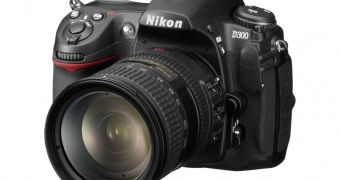
 14 DAY TRIAL //
14 DAY TRIAL // 
